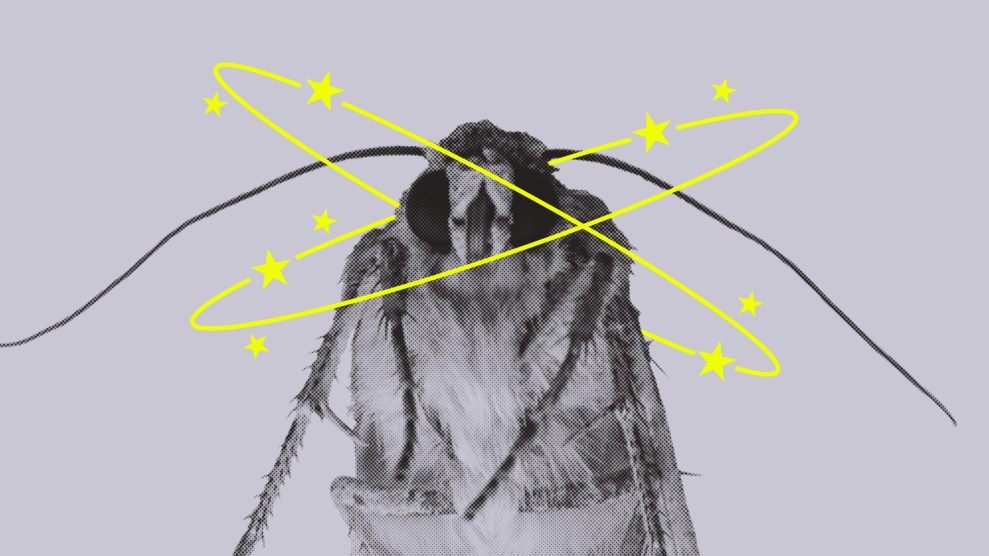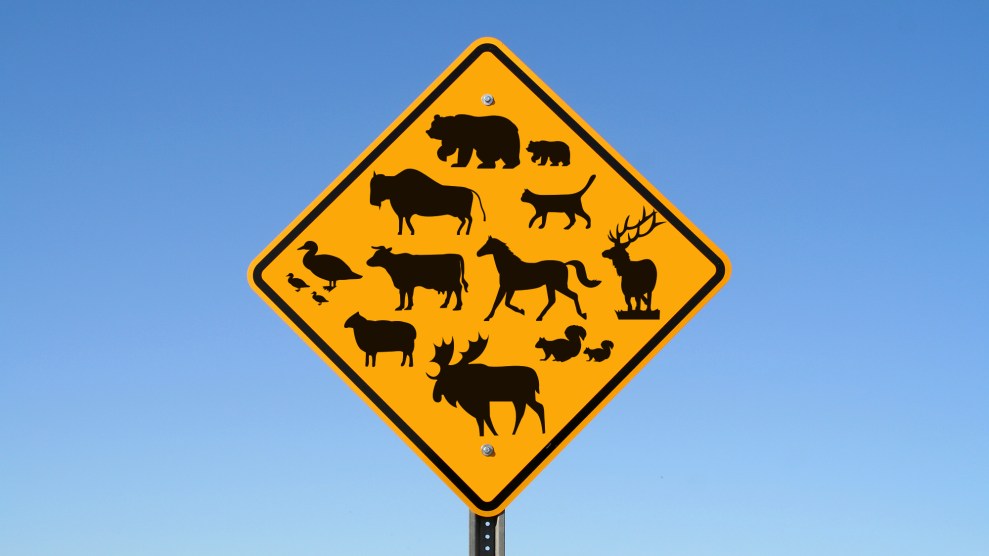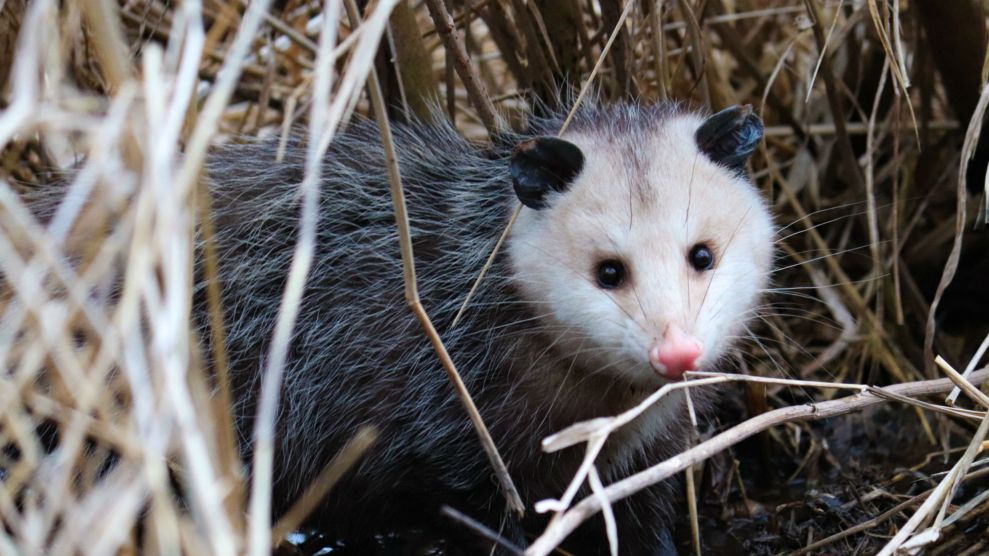
Mother Jones illustration; Getty
There’s a laundry list of ways air pollution is bad for humans: It’s linked to cardiovascular disease and asthma, diabetes, Alzheimer’s, and dementia. It likely makes us more susceptible to infections like Covid. It’s even associated with more mistakes by chess players.
And now, according to new research, we know it’s messing with moths.
In a study published in Science last month, researchers show that the nitrate radical NO3, an air pollutant linked to car exhaust and wildfires, can chemically alter the smell of flowers, making it harder for moths to locate their nectar. “These pollutants are removing certain compounds in the scent, and thereby making the scent unrecognizable,” says Jeff Riffell, a professor studying sensory neurobiology and ecology at the University of Washington and an author on the paper.
That’s bad news for us, too. As I wrote in December, about 75 percent of the world’s food relies on wild pollinators to grow. While moths may not have the same pizazz as butterflies, they are vital pollinators, particularly at night. (Moths may even be more efficient pollinators than bees, some research shows.)
The study, led by Jeremy Chan, a Ph.D. student at the University of Washington at the time, focused on the close relationship between two species of hawk moths, the white-lined sphinx and tobacco hawk moth, and the nighttime-blooming pale evening primrose, which are relatively abundant in eastern Washington and have a “wonderful scent,” according to Riffell. The moths, which are about as wide as the palm of your hand and can hang in the air like a hummingbird, are such strong sniffers that they can detect a mate from miles away, Riffell says, putting their abilities on par with the sensitivity of bomb-sniffing dogs. They typically travel dozens of miles per night, stopping to slurp up flower fuel at least every 15 minutes. The flowers, meanwhile, rely on the moths for pollination. “There’s great mutualism,” Riffell tells me. And disrupting that mutualism, he says, “can have really strong impacts on both participants.”
Indeed, it did. Through a series of carefully designed experiments, the group showed exactly how air pollutants can make life harder for both moths and flowers: First, in the lab, the group performed a “forensic analysis” on the flowers to determine what blend of compounds make up its scent, explains Joel Thornton, an atmospheric chemist and professor at UW and an author on the study. By exposing the moths to each compound one by one, they identified which might be the most important to the moths, and then procured a sort of “dupe” floral scent. In lab experiments inside a 2-meter wind tunnel, the moths recognized the dupe just as well as they did real floral scents.
But when the researchers added a pollutant, like NO3, to the wind tunnel, it threw the moths off. The bugs struggled to find both the real scent and the dupe. To prove why this was happening—Was the pollutant changing the scent? Overwhelming the moths? Or something else?—the team would have to get creative: They designed a “degraded” dupe to mimic the odor of a flower that had already been exposed to NO3. When they swapped the “degraded” scent into the wind tunnel—without any pollutant—it too confused the moths. This was a key discovery: It meant that the pollutant likely wasn’t changing anything about the moths; it was changing the chemical makeup of the flowers’ smell.
“We could have published probably there,” Thornton jokes. But Chan pushed for replicating the lab results in nature, which he did with real and paper flowers at a field site in eastern Washington. When NO3 was present, Chan clocked 70 percent fewer flower visits by the hawk moths, which the group estimates could lead to about 20 or 30 percent fewer fruits on the plants. “It’s having a really negative effect,” Riffell says. And given moths’ role in pollinating our food, that’s not just an environmental concern, Thornton adds, it’s an economic one.
Moths aren’t the only critters vulnerable to pollution. Human activities and the waste they produce are messing with animals’ senses in many ways. Studies show that diesel exhaust can disrupt honeybee pollination; traffic noise can stifle bird calls (and as a result, mating!); boat noise distracts hermit crabs; right whales raise the volume of their calls in noisy environments; insects flutter to death chasing the draw of streetlights; and bats struggle to hunt the closer they are to the din of highways.
But it’s not all bad news, at least not for the pale evening primrose and the hawk moths. Thanks to smog-reducing regulations like tailpipe standards, Thornton says, the United States and other countries have made “really great progress” over the past few decades to reduce nitrogen oxides emissions by more than half. If we keep policies that benefit human health in place, he adds, it’ll probably also benefit plants, pollinators, and farmers. “There is a bit of optimism to be had here,” he says.












